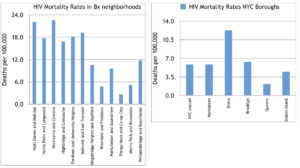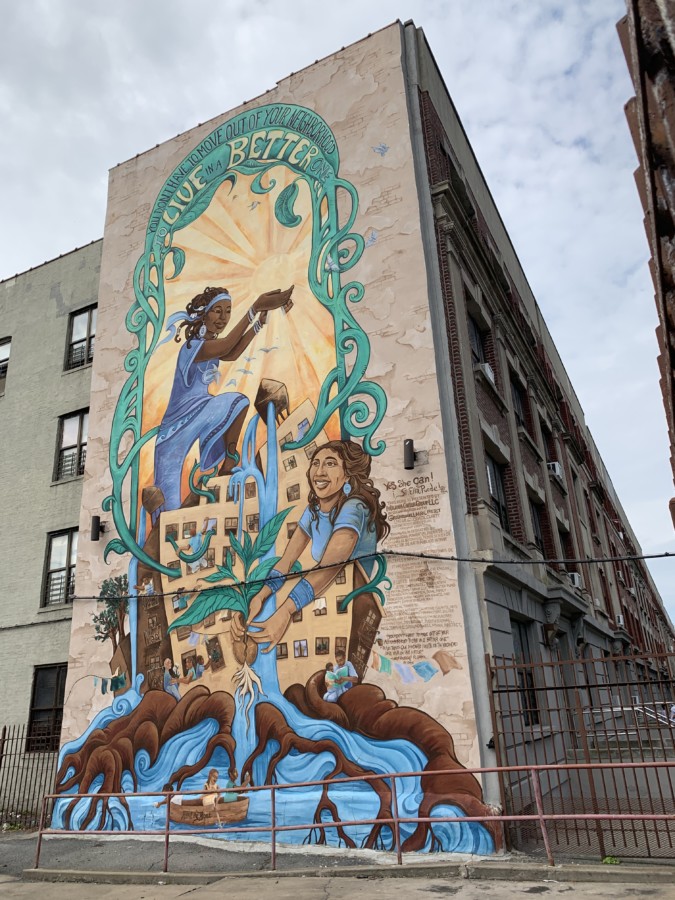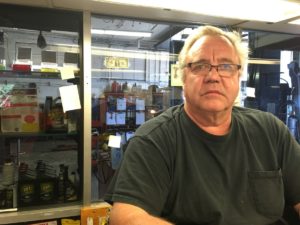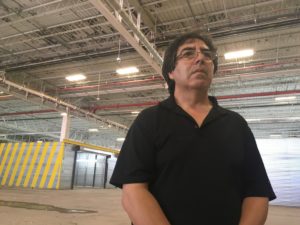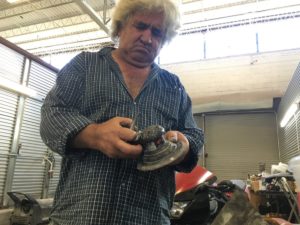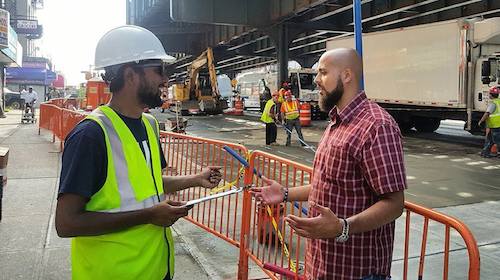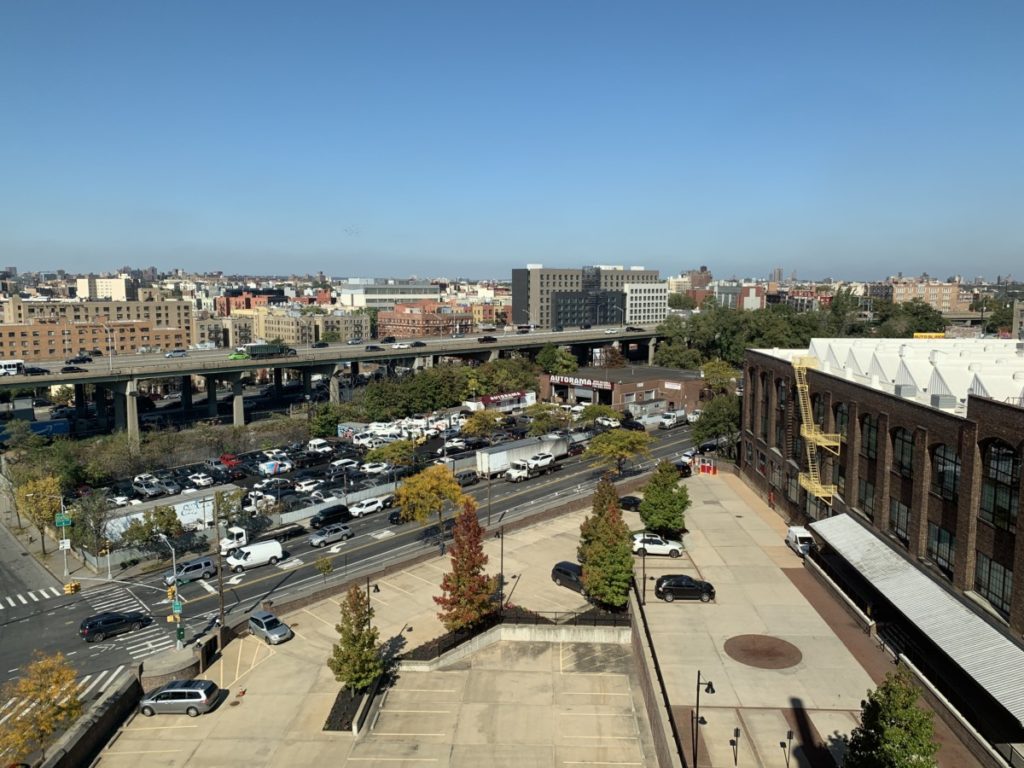
A three-foot ball covered in gold leaf was ceremoniously lowered into the river about 10 miles from Hunts Point in April of 1999. It was the first Bronx River Golden Ball celebrating the environmental restoration of the popular waterway.
U.S. Congressman Jose Serrano, a tireless advocate for the river, waited downstream with community members at Hunts Point Riverside Park for the ball to wash ashore. He had been responsible for securing upwards of $30 million in federal funds for this day to happen.
Whether he was working to create oyster reefs, parks, wetlands or a revitalized shoreline, Serrano, soon to set to step down from Congress, leveraged resources to improve environmental conditions in a district that has been subject to injustice in more than one way.
The Bronx River Golden Ball celebrated these first steps.
“He didn’t want to leave,” Maria Torres, president of The Point Community Development Corporation remembered about that day. “A lot of elected officials, they come, they do their thing, they do their speech and everything, but he had such a good time. He continued hanging out with everybody.”
Serrano stuck around with the people from the community, because he was one of the people of the community,” Torres said.
In many ways, Serrano’s enthusiasm for cleaning up the natural environment mirrored his passion for conquering corruption in the South Bronx district he has served as an elected official for the last 44 years.
He was 47-years-old when he was first elected to the 15th Congressional District, the sole Puerto Rican-born member of the House of Representatives at the time. Now 75, he is the most senior Hispanic Democrat and longest-serving Puerto Rican in Congress.
During his 30 years in Congress, and 14 years before that as New York State Assemblyman, constituents report that he kept an unwavering eye on his mission to tackle crime, corruption and toxic truck emissions from Hunts Point Market.
“The guy’s never forgotten where he comes from,” Torres said.
Last March, Serrano announced that he will not seek re-election in 2020, citing his diagnosis of Parkinson’s disease. It hasn’t yet affected his work, he said, but he can’t predict how fast it will advance.
“To have gone from Mayaguez, to Mill Brook Houses, to the New York State Assembly, to the halls of Congress is truly the American Dream,” Serrano said in his statement last spring. “I am honored to have had your trust over the years.”
Born on October 24, 1943 in Mayagüez, Puerto Rico, Serrano told The New York Times that he moved to the South Bronx with his family when he was seven years old. He learned English by singing along to Frank Sinatra records.
Serrano moved with his family to Mill Brook Houses, a public housing project in the South Bronx, and later attended Lehman College in 1961. Three years later he left to join the U.S. Army Medical Corps.
Long before he was elected to Congress, Serrano served as an administrator for Community School District 7, as well as the chair for the South Bronx Community Corporation. He was elected to the New York State Assembly in 1975.
Fernando Ferrer, former Bronx borough president and Serrano’s contemporary, reminisced about collaborating with his contemporary on many projects that improved road safety, especially the renewal of the Grand Concourse Boulevard.
“He’ll be remembered most for being very serious and straightforward and honest about his dealings,” said Ferrer, who has known Serrano for more than 50 years. “Coming from a place that produced more than one scandal, that’s commendable.”
Serrano was first elected to represent the 18th Congressional District in the Bronx in 1990, winning 92 percent of the vote. The seat opened up after the incumbent, Rep. Robert Garcia, was jailed for extortion in the Wedtech scandal. Wedtech Corporation, a Bronx-based military contractor, was charged with obtaining government contracts by bribing public officials in 1986.
“We both succeeded politicians who had been tainted by scandal so there was an enormous set of expectations for both of us to turn this around and to give people some degree of hope again,” Ferrer, who replaced Stanley Simon as Bronx Borough President after Simon’s criminal connection to the Wedtech was exposed, said. “I’ll let history judge me, but Joe Serrano delivered — and then some.”
While Serrano stuck to his scruples as an elected official in the South Bronx, some expressed frustration when the Congressman refused to compromise and make deals happen, according to Paul Lipson, Serrano’s former chief of staff and founder of The Point. Lipson added that Serrano’s moral approach to politics made him proud to work with the congressman.
“The moral dimension of politics seemed to rise to the surface in every conversation with him — whether it was the Iraq war, whether it was combating poverty and injustice, whether it was this concept of environmental equity,” Lipson said. “He would be the prophetic voice for the moral case on all these issues.”
That voice was not just for the people of South Bronx, Lipson said. Serrano played a huge role in the debate for the equity for citizens of Puerto Rico. Every time Serrano was approached with a bill, Lipson said he made sure that Puerto Rico would be included as a co-equal commonwealth of the U.S.
“He fought back for people who really don’t have a voice. They don’t have a voting member, so Serrano very often assumed that mantle,” Lipson said.
Serrano is also the Dean of the Congressional Hispanic Caucus and served as its chair from 1993 to 1994. As a senior member of the House Appropriations Committee, Serrano became known for advocating for Puerto Rico. Recently, he pushed to have the Trump administration improve relief efforts after Hurricane Maria as chairman of the Commerce, Justice, and Science subcommittee.
Maria Torres attributed much of The Point’s success in environmental justice issues to Serrano’s support.
Because of his illness, Torres said he hasn’t been as visible in the community. But he still remains accessible through his staff members who often stop by at The Point down the street from Serrano’s office for lunch — a luxury Torres said she’ll miss.
Ramon Cabral, deputy director for the 15th district, said Serrano’s commitment to the people inspires him and his fellow staff.
“We’re still doing the work that we have to do,” Cabral said. “We will until the last day that we’re in office. We do hope that there will still be someone here looking out for the interests of the South Bronx.”
Ten Democratic candidates have confirmed their run for the 15th district seat, but the pressure to honor Serrano’s legacy lingers.
Torres said that Serrano’s popularity will be hard to match, as well as his ability to get an older, conservative constituency on board with a lot of his liberal policies.
“He has that ability to tell the history of the community,” Torres said. “They were there too, and he was there with them, whether he was hosting old Latin shows, or out there fighting for environmental justice.”
Ferrer added that a sense of history and a connectedness with the people of the Bronx will be missed with Serrano’s retirement.
“That frankly is something we’ll all miss in politics,” Ferrer said, “somebody who came up the hard way, has relationships with people of long standing, so that when he talks about his district you have a reliance that he knows what he’s talking about because it’s people-centric. It’s not aimed at a focus group or some kind of powerful constituency — it comes from people.”
Twenty years after the first Bronx River Golden Ball, Ferrer saw the aging congressman at the funeral of an old friend, George Rodriguez, the chairman of the Bronx Community Board 1. Serrano knew Rodriguez from their early years in the South Bronx Community Corporation.
“We are both at an age where we go to more funerals than weddings now,” Ferrer said. “Joe stood there in the front of the funeral parlor for hours — in tribute to his old friend.”




